Today we have a unique appliance with dual 2.5GbE and dual SFP+ 10GbE ports based around an Intel Alder Lake-N platform. It may look like a fanless unit, but both the Intel N100 and Core i3-N305 versions we tested had fans. They were similar, but also very different in one key metric, which is why we have both. This is one where we had a number of folks ask about them, and we ended up feeling like some would love these, but others would not. As such, it was time to do a review.
Intel Core i3-N305 and N100 2-port 10G 2-port 2.5GbE Appliance Overview
Here is the video for the two units:
Let us first discuss pricing. The barebones N100 version was around $200 with discounts (AliExpress Affiliate) and the i3-N305 version was $295 usually with a few dollars off in discounts (AliExpress Affiliate.) We purchased our units configured just because we wanted to see what 16GB and 32GB SODIMMs were used.
Our test systems came with pfSense 2.7.0 pre-installed. We promptly installed our own OSes, but we tried pfSense CE, OPNsense, Ubuntu, and Proxmox VE.
Intel Core i3-N305 and N100 Appliance External Overview
On the front, we get a USB Type-C port, and a USB 3 Type-A port along with four USB 2.0 ports. If you were hoping for USB4, this is the wrong platform for that. We get a TF slot which is basically a microSD card slot.
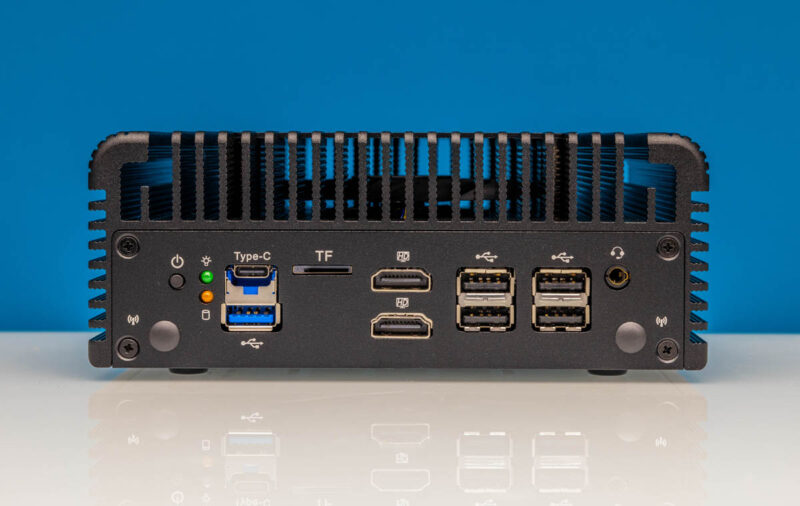
Something different here is that we get two HDMI ports and a combo headset jack. Especially with the Intel Core i3-N305 version, you could use this as a desktop or run signage off of it.
On the side, we have short fins.
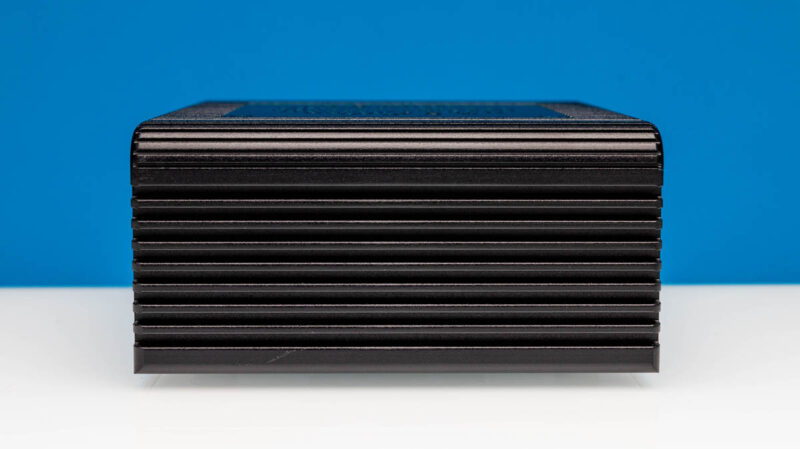
It is the same on the other side.
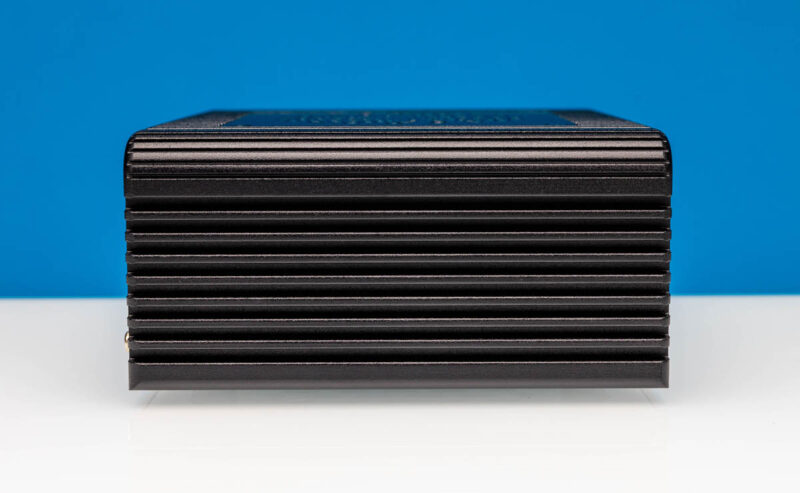
On the back, we have two SFP+ 10GbE ports. We also have two 2.5GbE ports powered by the Intel i226-V NIC.
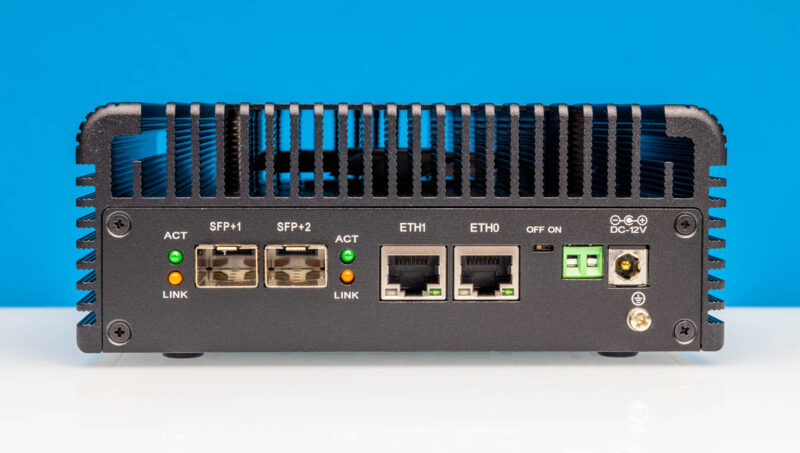
We then have two DC inputs. We tried to capture the green terminal, but it was not aligned well to the chassis.

The Intel Core i3-N305 was much better in this regard.

Since our internal hardware overview is going to be much longer than normal, here is the front without the faceplate.
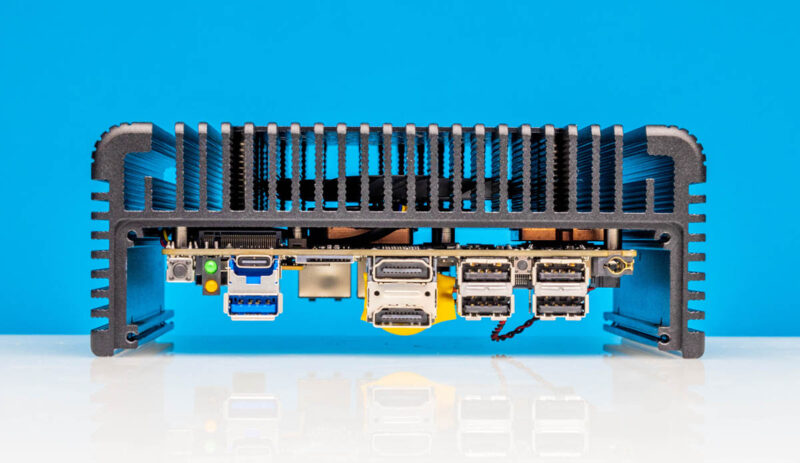
Here is the rear.
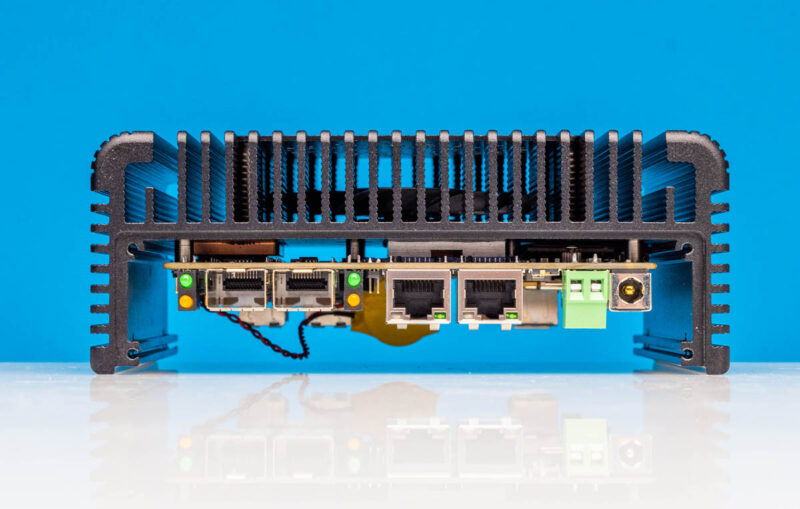
The chassis is meant to be a heatsink, but the fan on top is designed to circulate air through the chassis heatsink.
Next, let us get to the internal overview.

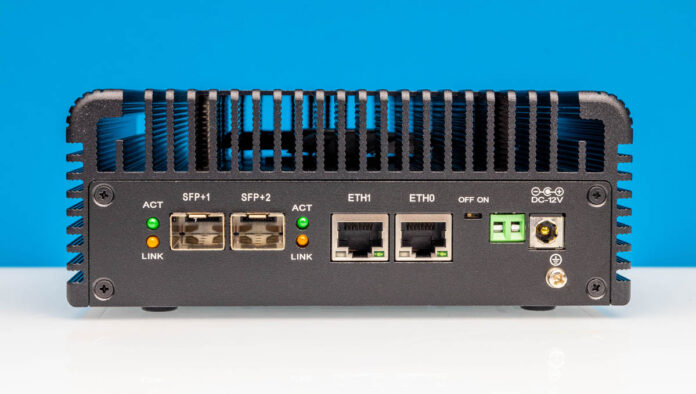



I’m surprised there was no mention of the awful TIM application.
I would honestly guess that out of the system power, 5w+ is the old 85299ES controller. They were not known to be power efficient.
This is so close, yet so far. I haven’t seen a lot of new N305 systems come out since last year when STH first covered them. Been hoping Protectli or one of the other vendors would have some system refreshes. But so far, nothing.
A modern 10GbE/Multi-GbE dual-port would be fantastic, and exactly what I need.
Check my post in the network forum from my build containing the n-305 unit. I bet the fan is loud because the vendor plugged into wrong location. (Fan2)
Can you benchmark with in band ecc enabled?
PCIe gen 2 is 4 Gb/s throughput per lane. 16 Gbps is all you’re going to get in x4… Doesn’t matter how old the chip is you attach to it.
Interesting product, but the fact it uses a 15-year-old NIC means that it’s essentially manufactured e-waste. Combining a low power device with a NIC that’s known to consume a lot of power (relative to newer NICs) isn’t great.
I’ve been looking into these heavily since this review came out. I recently found similar versions on aliexpress but with higher model CPUs (like i3-1215u) that have more PCIe lanes (20 vs 9) which in theory should resolve the NIC bandwidth issues. Search for “BKHD 2024 Mini PC 4*RJ45 With 2*10G SFP”
Still the same old NIC chip with a couple watts higher usage and the CPUs themselves will peak at higher wattages (with higher perf). Idle should not be too much more than the N100/300 versions. Also many of them use dual channel DDR4 so similar bandwidth but reduced cost for a given capacity. I have not bought one yet but very tempted. I’d be set if I could find a mini-ITX version with a bunch of SATA ports (there are some N100/300 boards like this).
I’d been hoping for a clear winner for a late 2024 build of a router/firewall and unfortunately this does not yet seem to be it.
Hi at 19:05 of the YT you show a lot of the unit disassembled and there seems to be a small gap between the upper case and the m.2 drive. Do you or anyone else here have a recommendation for active or passive cooling of the drive? Is there enough reasonable space for a thermal pad or is there a heatsink angle?
Thanks in advance
As a second thought an external SSD might not be a bad idea for my usage. I’m planning on using this as an OPNsense firewall/router only.
YT timestamp of where I believe the gap is
https://youtu.be/Z-3ZjMSEEc8?si=s9zmYsb_b2fe8lUl&t=1084
imgur from the yt video
https://imgur.com/pSkaNMP
@Patrick
Do you still have the n305 model? If so, could you check the CSM BIOS settings and confirm if the network stack is set to Do Not Launch, Legacy, or UEFI.
I bought one with the intent of using it as a firewall, Ive not been able to get the 2.5GB NICs to connect to *anything*; switches or ONT. And now, on reboot… the OS cant see either 2,5GB NIC….